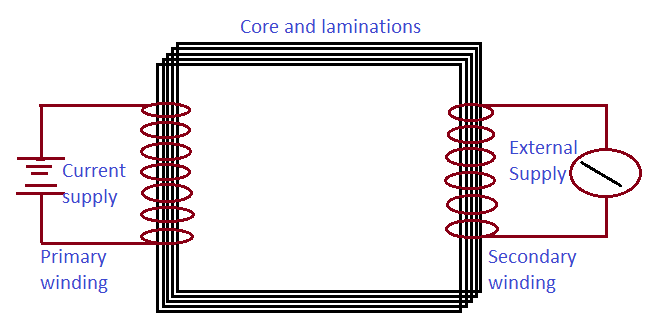Single Phase Transformer:
Single Phase Transformer: Single Phase Transformer is used to generate the alternate flux by the Faraday’s law, the induced e.m.f causes current init. It consists of two winding which are divided as primary and secondary.The primary winding is connected with an alternate current supply and the secondary winding can be connected to an external supply which is to be a closed one.These winding coils are concentric coils, and these winding are insulated from each other and also from iron core this is due to winding is provided on it.
Main parts of the single transformer:
The Following are the main parts of Transformer
- Winding
- Core
- Cover
- Cooling oil
- Thermometer
Winding:
This type of transformer consists of two Winding which are called a primary and secondary winding One of the winding is used to supply an alternate current and another winding is used to supply to external purpose. most of the winding wires are made up of copper due they are good at electricity supply.
Core:
A core is made up of steel, this is used to provide an air gap.and to decrease the eddy current losses lamination’s are provided.
Cover:
It is used to protect the complete transformer from weather conditions and external things it is made up of hard steel metal.
Cooling oil:
This is used for decreasing the temperature when the winding gets highly heated.
Thermometer:
This is provided inside the transformer because it used to check the temperature of oil present in it and indicates when it increased to high temperature.
Working of single phase transformer:
When an alternating current is supplied to a primary winding, the alternate current used to flow in a closed one (if it is not a closed one the supplied current does not flow in it). there is an alternating flux is developed due to the relative magnetic potential or MMF, this alternating flux is cut by the conductor and leads to develop an induced E.M.F in it and this generates current flow in a closed circuit, by the help of secondary winding the current can be supplied to further process.



